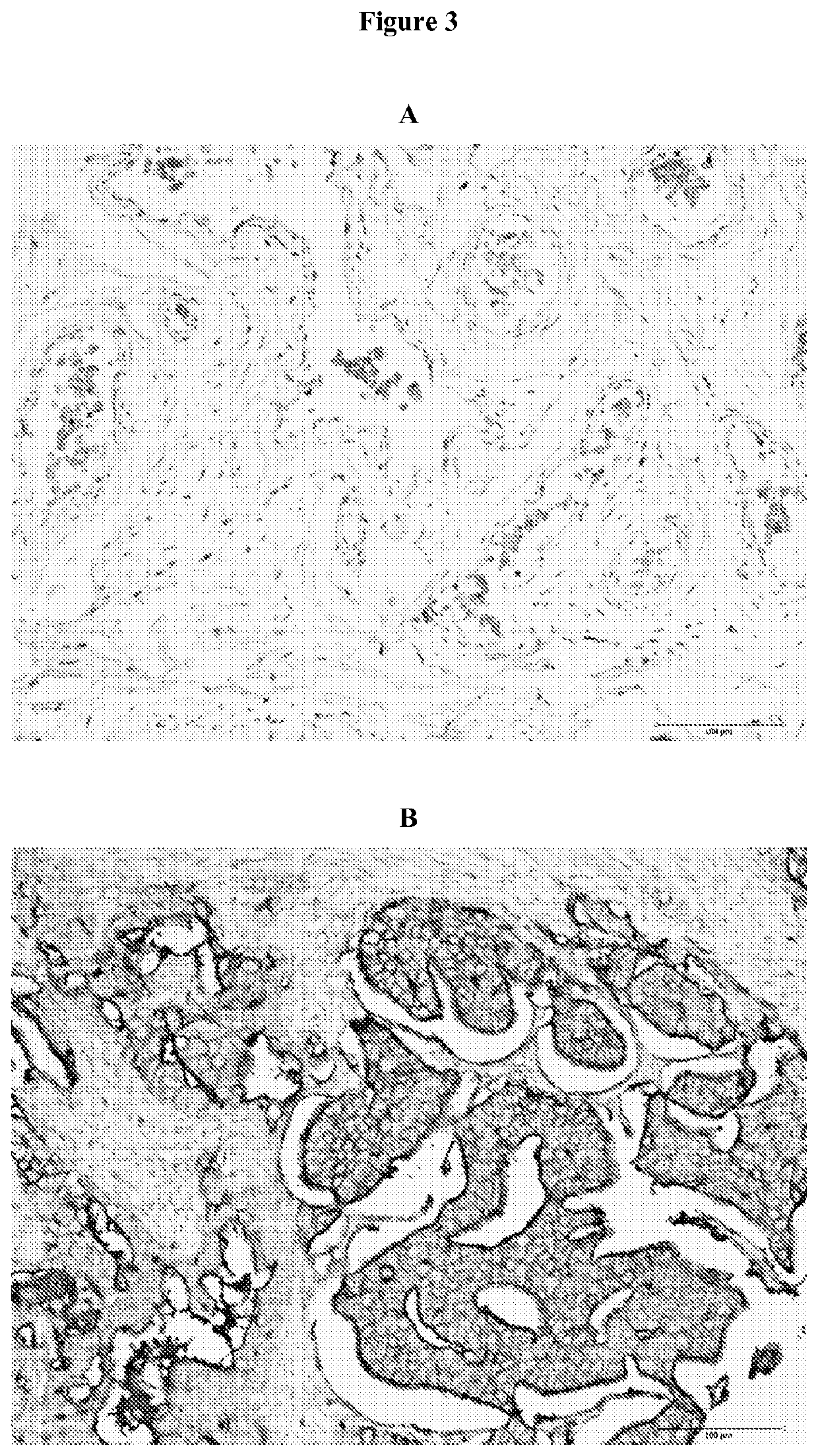Method for isolating and detecting cancer stem cells
a cancer stem cell and isolating technology, applied in the field of isolating and detecting cancer stem cells, can solve the problem of faster implementation of existing methods
- Summary
- Abstract
- Description
- Claims
- Application Information
AI Technical Summary
Benefits of technology
Problems solved by technology
Method used
Image
Examples
example 1
for the Isolation of Cancer Stem Cells from Breast Cancer
[0295]I. Materials Required
[0296]Reagents and Materials[0297]Biotinylated individual lectin or mixture of biotinylated lectins specifically marking Cancer Stem Cells of hormone-dependent cancers, here breast cancer (prepared from individual lectins from Vector Laboratories and Emelca Biosciences)[0298]CELLection Biotin Binder kit (Invitrogen) containing magnetic beads coupled to streptavidin by a DNA bond[0299]Magnet
[0300]Buffers[0301]Versene (Invitrogen) comprising phosphate buffered saline (PBS) and EDTA[0302]Buffer 1: PBS (Phosphate buffered saline without Ca2+ and Mg2+) with 0.1% BSA (Bovine serum albumin), pH 7.4[0303]Buffer 2: PBS (Phosphate Buffer Saline without Ca2+ and Mg2+) with 0.1% BSA (Bovine Serum Albumin) and 0.6% sodium citrate[0304]Buffer 3: RPMI 1640 with 1% FCS (fetal calf serum), 1 mM CaCl2) and 5 mM MgCl2, pH 7.0-7.4.
[0305]II. Duration of the Experiment[0306]20 min to prepare cells[0307]20 min to label cel...
example 2
city Test
[0337]The objective of a clonogenicity test is to observe the capacity of cells to reform spheres (corresponding in the patient to the reform of a tumor mass) and therefore their proliferative capacity.
[0338]The clonogenicity test is in this example used to confirm the presence of cancer stem cells of hormone-dependent cancers and to quantify said cells in a sample after isolation of cancer stem cells of hormone-dependent cancers by the isolation method described herein. invention. It thus makes it possible to demonstrate the effectiveness of the isolation method according to the invention compared to a control sample not subjected to this method (unsorted cells).
[0339]The clonogenicity tests were carried out in a 6-well plate at a density of 500 cells / cm2 in a medium of RPMI composition (Gibco) supplemented with 50 units / ml of penicillin, 50 units / ml of streptomycin (Gibco) and 2.4 g / L of sodium bicarbonate, 1 M of HEPES buffer (Sigma Aldrich, Saint-Quentin-Fallavier, Fran...
PUM
| Property | Measurement | Unit |
|---|---|---|
| density | aaaaa | aaaaa |
| weight ratio | aaaaa | aaaaa |
| thickness | aaaaa | aaaaa |
Abstract
Description
Claims
Application Information
 Login to View More
Login to View More - R&D
- Intellectual Property
- Life Sciences
- Materials
- Tech Scout
- Unparalleled Data Quality
- Higher Quality Content
- 60% Fewer Hallucinations
Browse by: Latest US Patents, China's latest patents, Technical Efficacy Thesaurus, Application Domain, Technology Topic, Popular Technical Reports.
© 2025 PatSnap. All rights reserved.Legal|Privacy policy|Modern Slavery Act Transparency Statement|Sitemap|About US| Contact US: help@patsnap.com



